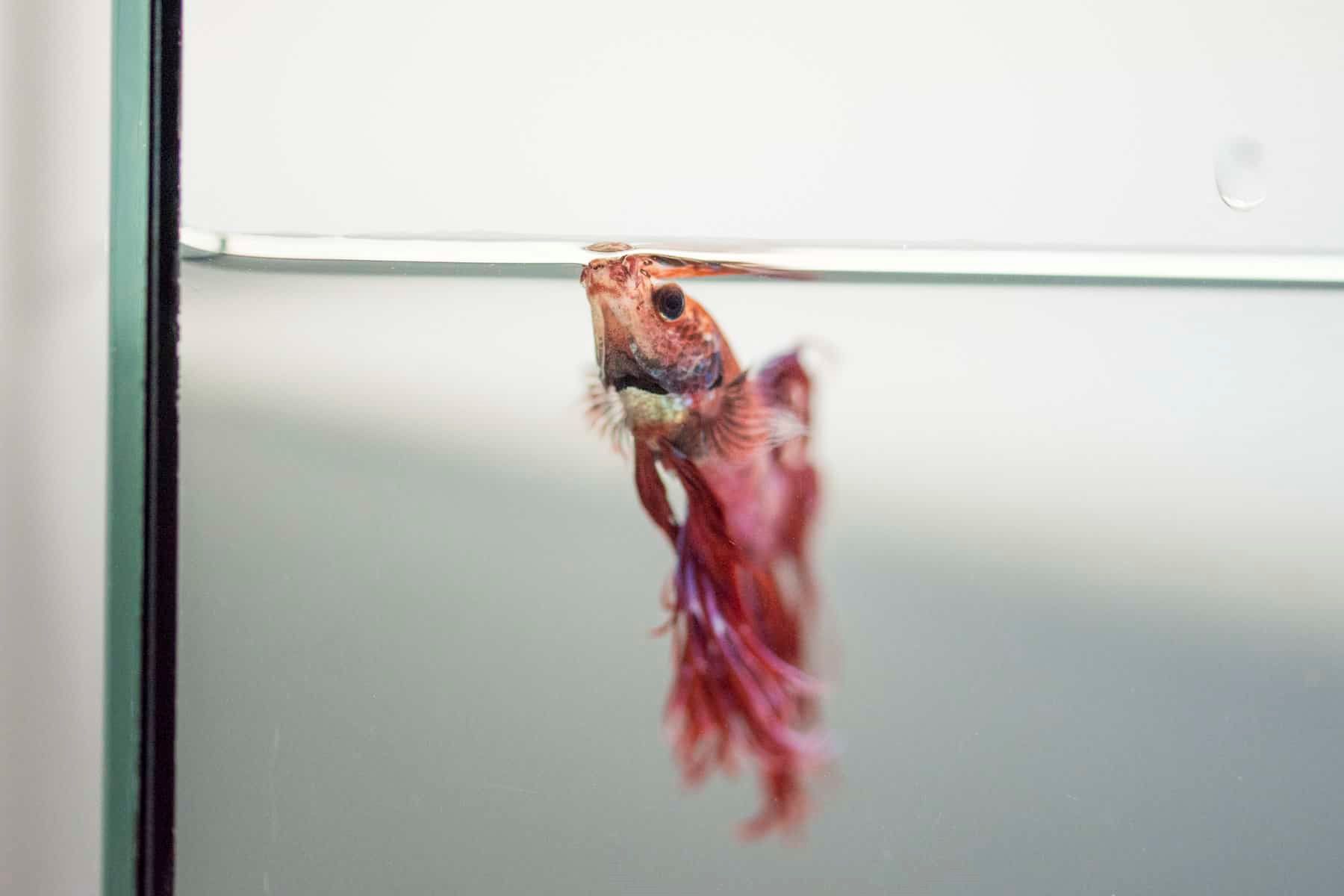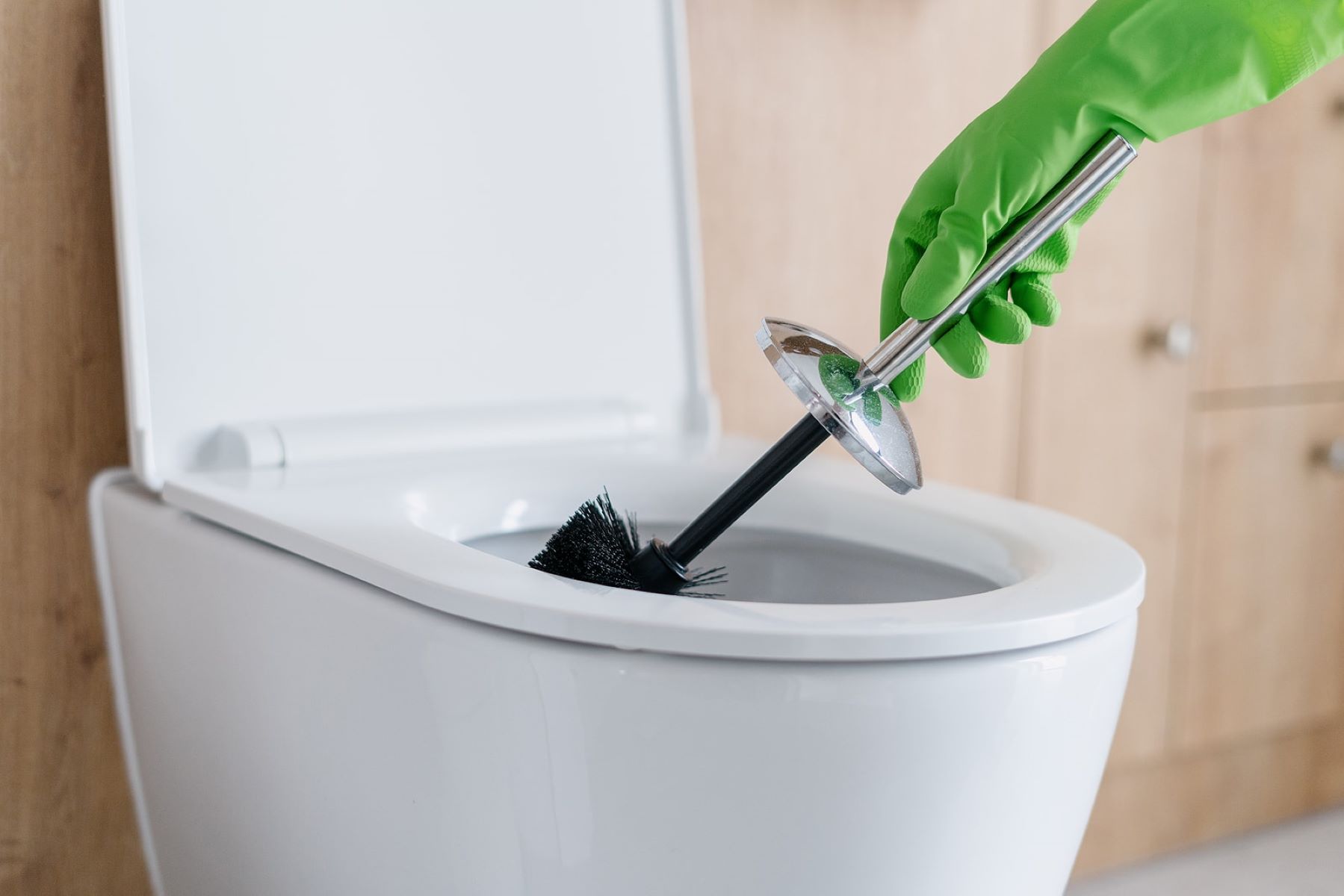Home>Pets & Animals>The Ultimate Guide To Betta Fish Tank Filter Usage


Pets & Animals
The Ultimate Guide To Betta Fish Tank Filter Usage
Published: January 23, 2024
Learn how to choose and use the best betta fish tank filter for a healthy and thriving aquatic environment. Expert tips and recommendations for Pets & Animals enthusiasts.
(Many of the links in this article redirect to a specific reviewed product. Your purchase of these products through affiliate links helps to generate commission for Regretless.com, at no extra cost. Learn more)
Table of Contents
Introduction
Betta fish, also known as Siamese fighting fish, are vibrant and captivating aquatic creatures that have gained immense popularity among fish enthusiasts. These stunning fish are cherished for their striking colors and elegant fins, making them a beautiful addition to any aquarium. However, to ensure the well-being of these majestic creatures, it is crucial to provide them with a suitable and well-maintained habitat. One of the fundamental components of a healthy betta fish tank is a reliable filtration system.
In the wild, bettas inhabit slow-moving or stagnant waters, which are often rich in vegetation. As a result, they have evolved to thrive in environments with minimal water flow. When kept in captivity, it is essential to replicate these conditions to create a comfortable and stress-free habitat for bettas. This is where a well-chosen and properly maintained tank filter plays a pivotal role in maintaining water quality and ensuring the overall health of your betta fish.
In this comprehensive guide, we will delve into the intricate world of betta fish tank filtration, exploring the different types of filters available, the factors to consider when selecting the right filter for your betta fish tank, and the essential steps for setting up and maintaining your filtration system. Additionally, we will address common issues that may arise with betta fish tank filters and provide troubleshooting tips to help you overcome these challenges.
By understanding the significance of proper filtration and equipping yourself with the knowledge to select, set up, and maintain a suitable filter for your betta fish tank, you will be empowered to create a thriving aquatic environment for your beloved bettas. So, let's embark on this enlightening journey to unravel the secrets of effective betta fish tank filtration.
Read more: Top 5 Fish For Your 3-Gallon Tank!
Understanding Betta Fish Tank Filtration
When it comes to betta fish tank filtration, it's essential to comprehend the unique requirements of these captivating aquatic creatures. Unlike some other fish species, bettas originate from slow-moving or stagnant waters, such as rice paddies, shallow streams, and even drainage ditches in Southeast Asia. These natural habitats are characterized by minimal water flow and an abundance of vegetation, which significantly influences the way bettas interact with their environment.
In the wild, bettas have adapted to thrive in oxygen-deprived waters by developing a labyrinth organ, allowing them to breathe air at the water's surface. This evolutionary feature enables bettas to survive in oxygen-poor environments, which is a crucial factor to consider when setting up their tank filtration system. Unlike many other fish, bettas are sensitive to strong water currents, which can cause stress and discomfort, potentially leading to health issues.
Understanding the natural habitat of bettas is pivotal in creating an optimal tank environment. When selecting a filtration system for a betta fish tank, it's important to prioritize gentle water movement and minimal disturbance. An ideal filter for bettas should provide efficient mechanical and biological filtration without creating strong currents that could agitate these delicate fish.
Moreover, betta fish are known for their vibrant, flowing fins, which can be susceptible to damage in turbulent water conditions. Therefore, a carefully chosen filter should maintain water quality while ensuring the comfort and well-being of these elegant fish. By replicating the tranquility of their natural habitat, bettas can thrive in captivity, showcasing their full spectrum of colors and exhibiting their graceful swimming behavior.
In essence, understanding betta fish tank filtration involves recognizing the specific needs of these remarkable fish and tailoring the filtration system to create a harmonious and stress-free aquatic environment. By embracing the unique characteristics of bettas and their natural habitat, aquarists can provide an enriching and sustainable habitat for these captivating creatures.
This understanding serves as the foundation for selecting the most suitable filtration system, setting it up effectively, and maintaining optimal water conditions to support the health and vitality of bettas in a captive setting.
Types of Betta Fish Tank Filters
When it comes to selecting a filter for a betta fish tank, it is essential to consider the specific needs of these elegant aquatic creatures. There are several types of filters available, each with its unique features and suitability for betta fish habitats. Understanding the characteristics of different filter types empowers aquarists to make informed decisions based on the specific requirements of their betta fish and the dynamics of their tank environment.
-
Sponge Filters: These filters are highly regarded for betta fish tanks due to their gentle water flow and efficient biological filtration. Sponge filters operate by drawing water through a sponge, which serves as a mechanical filter to trap debris and waste. Additionally, beneficial bacteria colonize the sponge, facilitating biological filtration by breaking down harmful ammonia and nitrites. The gentle water movement provided by sponge filters makes them an excellent choice for betta fish, as it minimizes stress and turbulence in the tank.
-
Undergravel Filters: Undergravel filters are a popular choice for betta fish tanks, especially in setups with live plants. These filters consist of a perforated plate placed beneath the substrate, allowing water to flow through the gravel, where beneficial bacteria thrive. Undergravel filters promote biological filtration and help maintain water clarity, creating a conducive environment for bettas and aquatic plants. However, it's important to ensure that the water flow generated by undergravel filters is gentle and does not disrupt the bettas' tranquil habitat.
-
Hang-On-Back (HOB) Filters: HOB filters are versatile and widely used in aquariums, including betta fish tanks. These filters are mounted on the edge of the tank and draw water through a series of filter media, such as sponges, carbon, and bio-media. HOB filters provide effective mechanical and chemical filtration, and some models offer adjustable flow rates to accommodate the specific needs of betta fish. When selecting a HOB filter for a betta tank, it's crucial to opt for models with adjustable flow and consider adding a pre-filter sponge to further reduce water agitation.
-
Internal Filters: Internal filters are compact units placed inside the aquarium, often secured to the tank wall with suction cups. These filters offer mechanical and biological filtration and are suitable for smaller betta fish tanks. When choosing an internal filter for bettas, it's vital to select a model with adjustable flow settings to ensure a gentle water movement that aligns with the bettas' preferences.
-
Canister Filters: While less commonly used in betta fish tanks, canister filters can be suitable for larger setups or heavily planted tanks. These filters are placed outside the aquarium and provide powerful mechanical, chemical, and biological filtration. When considering a canister filter for a betta tank, it's crucial to select models with adjustable flow rates and incorporate pre-filter media to minimize water turbulence.
By understanding the characteristics and suitability of different filter types, aquarists can make informed choices that align with the specific needs of betta fish and contribute to maintaining a harmonious and thriving aquatic environment. Whether prioritizing gentle water flow, efficient biological filtration, or adaptability to planted setups, selecting the right filter type is a crucial step in creating an optimal habitat for these captivating aquatic companions.
Factors to Consider When Choosing a Betta Fish Tank Filter
Selecting the most suitable filter for a betta fish tank is a pivotal decision that significantly impacts the well-being and vitality of these captivating aquatic creatures. When evaluating potential filters for a betta habitat, several key factors should be taken into consideration to ensure an optimal and stress-free environment for the fish.
Gentle Water Flow
Betta fish are native to slow-moving or stagnant waters, and they are particularly sensitive to strong water currents. When choosing a filter for a betta tank, prioritizing a model with a gentle water flow is essential. Filters such as sponge filters and certain hang-on-back (HOB) models offer adjustable flow rates, enabling aquarists to create a tranquil environment that aligns with the natural habitat preferences of bettas.
Biological Filtration Efficiency
Efficient biological filtration is critical for maintaining water quality in a betta fish tank. Beneficial bacteria play a vital role in breaking down harmful ammonia and nitrites, ensuring a healthy aquatic environment for the fish. Filters that promote the growth of beneficial bacteria, such as sponge filters and undergravel filters, are well-suited for betta habitats, contributing to the overall well-being of the fish.
Minimization of Water Turbulence
Minimizing water turbulence is crucial for the comfort and stress reduction of betta fish. Filters that create excessive agitation or strong currents can cause distress to bettas and may lead to fin damage or behavioral issues. Therefore, selecting a filter that maintains a tranquil and undisturbed habitat is paramount for the overall health and happiness of the fish.
Compatibility with Tank Size
The size of the betta fish tank should be taken into account when choosing a filter. Filters designed for larger aquariums may generate stronger water flow, which can be unsuitable for smaller betta habitats. Opting for a filter that is appropriately sized for the tank ensures that the water movement remains gentle and conducive to the well-being of the fish.
Consideration for Live Plants
If live plants are incorporated into the betta tank, it's important to select a filter that complements a planted environment. Undergravel filters and certain HOB models can effectively support the biological processes within planted tanks while maintaining a serene and balanced aquatic ecosystem for both the bettas and the live flora.
By carefully evaluating these factors and selecting a filter that aligns with the specific needs of betta fish, aquarists can create a harmonious and thriving habitat that promotes the health, vibrancy, and natural behaviors of these remarkable aquatic companions.
Setting Up Your Betta Fish Tank Filter
Setting up a betta fish tank filter is a crucial step in creating a conducive and sustainable aquatic environment for these captivating creatures. Proper installation and configuration of the filter not only ensure effective water filtration but also play a significant role in maintaining the well-being and comfort of the bettas. Here's a detailed guide to help you set up your betta fish tank filter with precision and care.
1. Selecting the Appropriate Filter Type
Before setting up the filter, it's essential to ensure that you have chosen the most suitable filter type for your betta fish tank. Considering the specific needs of bettas, opt for a filter that provides gentle water flow, efficient biological filtration, and minimal disturbance. Depending on your tank size and setup, options such as sponge filters, undergravel filters, or certain hang-on-back (HOB) models are particularly well-suited for betta habitats.
2. Assembling the Filter Components
If your selected filter requires assembly, carefully follow the manufacturer's instructions to set up the filter components. This may involve installing filter media, connecting tubing or attachments, and ensuring that all parts are securely in place. Pay close attention to any adjustable flow settings, particularly for filters that offer variable water flow rates.
3. Positioning the Filter
Once the filter components are assembled, position the filter within the betta tank according to the manufacturer's recommendations. Ensure that the filter is securely attached or placed in a stable position to prevent movement or displacement. For hang-on-back filters, securely mount the filter on the edge of the tank, making sure it is level and stable.
4. Adjusting the Flow Rate
If your filter offers adjustable flow settings, fine-tune the flow rate to create a gentle and tranquil water movement within the tank. For betta fish, it's crucial to minimize water agitation, so adjusting the flow rate to the lowest setting that still ensures effective filtration is often advisable.
5. Priming the Filter (if applicable)
For certain filter types, such as canister filters, priming may be necessary to initiate water flow through the filter system. Follow the manufacturer's instructions to prime the filter, ensuring that water circulates through the filter media and that air pockets are eliminated to facilitate proper filtration.
6. Testing the Filter Operation
After setting up the filter, carefully observe its operation to ensure that water is flowing effectively through the filtration system. Check for any signs of leaks, unusual noises, or irregularities in water flow. This step allows you to address any potential issues before introducing bettas to the tank.
By meticulously following these steps and setting up your betta fish tank filter with precision and attention to detail, you can establish an optimal aquatic environment that promotes the health, comfort, and vibrancy of your beloved bettas. A well-configured and thoughtfully positioned filter contributes to maintaining pristine water quality and creating a serene habitat where bettas can thrive and showcase their natural beauty.
Maintaining Your Betta Fish Tank Filter
Proper maintenance of your betta fish tank filter is essential for sustaining a healthy aquatic environment and ensuring the well-being of your vibrant bettas. Regular upkeep and care of the filter system contribute to effective water filtration, optimal water quality, and a tranquil habitat for your aquatic companions. Here's a comprehensive guide to maintaining your betta fish tank filter with diligence and precision.
1. Routine Cleaning and Inspection
Regularly scheduled cleaning sessions are vital to prevent the accumulation of debris and organic matter within the filter. Depending on the type of filter, maintenance tasks may include rinsing or replacing filter media, cleaning impeller assemblies, and clearing any obstructions in the intake or outflow components. Additionally, inspecting the filter for signs of wear, damage, or clogging ensures that it continues to function optimally.
2. Monitoring Water Parameters
Consistently monitoring key water parameters, such as ammonia, nitrite, nitrate, and pH levels, is crucial for assessing the filtration efficiency and overall water quality. By conducting regular water tests, aquarists can identify any fluctuations or imbalances, allowing them to adjust the filter operation or perform maintenance as needed to maintain pristine water conditions for their bettas.
3. Siphoning Debris and Waste
In conjunction with filter maintenance, performing routine gravel siphoning and substrate cleaning helps remove accumulated debris and waste from the aquarium. This proactive approach reduces the load on the filter and promotes a cleaner and healthier aquatic environment for your bettas.
4. Replacing Filter Media
Over time, filter media may become clogged or lose their effectiveness, necessitating replacement to uphold efficient filtration. Following the manufacturer's recommendations, replace filter media at the appropriate intervals to ensure that the filter continues to provide optimal mechanical and biological filtration for your betta fish tank.
5. Conserving Beneficial Bacteria
When conducting filter maintenance, it's essential to preserve the beneficial bacteria colonies that facilitate biological filtration. Avoid rinsing or replacing all filter media simultaneously to retain a portion of the beneficial bacteria, which is instrumental in maintaining a stable and healthy nitrogen cycle within the aquarium.
6. Addressing Filter Noise or Malfunctions
In the event of unusual noises, reduced water flow, or other filter malfunctions, promptly investigate and address the underlying issues. This proactive approach prevents potential disruptions to the filtration process and mitigates any adverse impact on the bettas and their habitat.
By adhering to a consistent maintenance routine and prioritizing the well-being of your bettas, you can uphold a pristine and thriving aquatic environment. A well-maintained filter system contributes to the overall health, vibrancy, and natural behaviors of your bettas, fostering a captivating and sustainable aquatic habitat for these remarkable aquatic companions.
Troubleshooting Common Betta Fish Tank Filter Issues
Effective filtration is essential for maintaining a healthy and balanced aquatic environment for betta fish. However, filter systems can encounter issues that may disrupt their functionality, potentially impacting water quality and the well-being of the fish. Understanding and addressing common filter-related issues is crucial for ensuring the optimal performance of the filtration system. Here's a detailed exploration of common betta fish tank filter issues and the corresponding troubleshooting measures.
1. Reduced Water Flow
If the filter exhibits a decrease in water flow, several factors could be contributing to this issue. Potential causes include clogged filter media, obstructed intake or outflow tubes, or a compromised impeller assembly. To troubleshoot this issue, begin by inspecting and cleaning the filter media to remove any accumulated debris. Additionally, check for blockages in the intake and outflow components, ensuring that water circulation remains unimpeded. If the impeller is the culprit, carefully clean or replace it as needed to restore optimal water flow.
2. Noisy Operation
Unusual noises emanating from the filter can indicate mechanical issues that require attention. Common sources of noise include air trapped in the filter, loose components, or a malfunctioning impeller. To address this, attempt to prime the filter to expel any trapped air, ensuring smooth water circulation. Check for loose or misaligned parts within the filter and secure them appropriately to minimize vibrations and noise. If the impeller is causing the disturbance, inspect it for damage or debris, and clean or replace it as necessary.
3. Water Leakage
Leakage from the filter can pose a significant concern, potentially leading to water loss and instability within the aquarium. Inspect the filter and its connections for signs of damage or loose fittings, addressing any issues promptly to prevent further leakage. Additionally, ensure that seals and gaskets are intact and properly positioned to maintain a watertight seal. Regularly monitoring the filter for potential leaks and taking proactive measures to rectify any vulnerabilities is crucial for sustaining a secure aquatic environment.
4. Inadequate Filtration
If the filter fails to effectively maintain water quality, leading to elevated ammonia or nitrite levels, it may indicate a decline in filtration efficiency. This could be attributed to clogged or exhausted filter media, insufficient beneficial bacteria colonization, or an undersized filter for the tank. To troubleshoot this issue, conduct a thorough cleaning and, if necessary, replacement of the filter media to restore optimal filtration capacity. Additionally, consider supplementing the filter with beneficial bacteria additives to enhance biological filtration and promote a stable nitrogen cycle within the aquarium.
5. Erratic Flow Patterns
Irregular or turbulent water flow within the tank can distress betta fish and disrupt the overall equilibrium of the aquatic environment. This issue may arise from improper filter placement, excessive flow rates, or inadequate baffling. To address erratic flow patterns, reposition the filter to minimize direct water agitation, ensuring that bettas are not subjected to strong currents. If the filter offers adjustable flow settings, fine-tune the rate to achieve a gentle and tranquil water movement that aligns with the natural preferences of betta fish.
By proactively identifying and addressing these common betta fish tank filter issues, aquarists can uphold a stable and thriving aquatic habitat for their beloved bettas. Regular monitoring and timely troubleshooting measures contribute to sustaining optimal filtration performance, promoting the health, vibrancy, and natural behaviors of these remarkable aquatic companions.
Conclusion
In conclusion, the successful care and maintenance of betta fish, also known as Siamese fighting fish, hinge on the thoughtful selection, setup, and maintenance of an appropriate tank filtration system. Understanding the unique requirements of bettas and their natural habitat is fundamental to creating a thriving aquatic environment that supports their health, vibrancy, and natural behaviors.
The intricate world of betta fish tank filtration encompasses a diverse array of filter types, each tailored to meet specific needs. From gentle sponge filters to versatile hang-on-back models, aquarists have a range of options to choose from, allowing them to prioritize the well-being and comfort of their bettas. By considering factors such as gentle water flow, efficient biological filtration, and compatibility with tank size, aquarists can make informed decisions when selecting a filter for their betta fish tank.
Setting up the filter with precision and care is paramount to ensuring a tranquil and conducive habitat for bettas. From assembling the filter components to adjusting the flow rate and priming the system, meticulous attention to detail during the setup process contributes to the overall well-being of the fish. Furthermore, consistent maintenance, including routine cleaning, monitoring water parameters, and preserving beneficial bacteria, is essential for sustaining optimal filtration performance and water quality.
By addressing common filter-related issues, such as reduced water flow, noisy operation, water leakage, inadequate filtration, and erratic flow patterns, aquarists can proactively maintain a stable and thriving aquatic environment for their bettas. Timely troubleshooting measures and proactive maintenance efforts play a pivotal role in upholding the health, vibrancy, and natural behaviors of these captivating aquatic companions.
In essence, the art of betta fish tank filtration is a harmonious blend of understanding the unique needs of bettas, selecting suitable filtration systems, and maintaining a serene and sustainable aquatic habitat. By embracing these principles, aquarists can cultivate an environment where bettas can flourish, showcasing their vibrant colors and graceful swimming behavior while enjoying a life of vitality and well-being in captivity.








